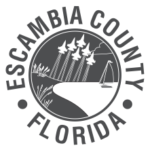
Subscribe to RESTORE Updates
February 6, 2017
Commissioners Shortlist Projects for Discussion
Ten Escambia County RESTORE Direct Component projects have been shortlisted by commissioners to be considered for funding. Each commissioner selected two projects from the list of 124 RESTORE applications ranked by the Escambia County RESTORE Act Advisory Committee. Projects include:
Staff will present a risk-benefit analysis at the committee of the whole meeting scheduled for 9 a.m., Thursday, Feb. 9. The commissioners will then decide how many of the projects to fund. A final decision will not be made until the agenda item comes before the board at a regular commission meeting, scheduled at night which includes an opportunity for public input.
Once the board of county commissioners selects the projects to receive RESTORE Direct Component funding, the county will draft a Multi-Year Implementation Plan and initiate a 45-day public comment period. Public input will be reviewed and the necessary updates will be made before the MYIP is submitted to the U.S. Treasury Department for final review and acceptance.
Upon approval by the U.S. Treasury Department of the MYIP, the selected projects will be able to receive funding for planning and design. It will then be county staff’s responsibility to search for leveraging funds for construction and implementation of the projects. This method would provide shovel ready projects and better improve chances for receiving leveraging funds.
October 13, 2016
Commissioners Continue Project Selection Discussion
and Review Risks Versus Benefits Analysis from Staff
(Committee of the Whole)
At this meeting, staff gave a presentation on the six Direct Component project nominations received to date.
South Dogtrack Drainage- Coral Creek, Hampton Lake, Three Waters Green (aka, Mariner Village), Liberty Church
Two commissioners had not yet submitted their nominations. The presentation consisted of first, an overview of the projects selected, and second, the risks versus benefit analysis for each project. The risk analysis process done by staff and results were explained. The process involved many different departments and permitting agencies. The results were based off of the applicants draft conceptual designs so it was stressed that many of these risks could easily be mitigated once planning & design phases have been implemented.
The board agreed that the risk versus benefit analysis process was successful and provided enough information to select projects. However, until the other two commissioners submitted their projects, they would not be able to move forward. Staff was directed to perform the same analysis on the remaining four projects once they were submitted. Then the board would resume discussion on project selection. The goal is to continue the discussion in November but a date will not be set until after staff receives all of the project nominations.
Once the Board of County Commissioners selects the projects to receive RESTORE Direct Component funding, the county will draft a Multi-Year Implementation Plan and initiate a 45-day public comment period. Public input will be reviewed and necessary updates will be made before the MYIP is submitted to the U.S. Treasury Department for final review and acceptance.
August 11, 2016
Commissioners Discuss Project Selection (Committee of the Whole)
At the meeting, staff gave a presentation to the Board of County Commissioners regarding RESTORE Direct Component Project Selection and Multi-Year Implementation Plan. This presentation reviewed the requirements by the U.S. Treasury and timeline for writing the Multi-Year Plan. It also went over the funding allocations for Escambia County and future steps. Additionally, staff recommended a process establishment that compares to the Gulf Coast Ecosystem Restoration Council methodology. This process was to invest Direct Component (Pot 1) funds into planning & design and to search for leveraging funds for construction and implementation projects. This method would provide foundational, shovel ready projects and better improve chances for receiving leveraging funds.
The board agreed to undertake this methodology, but with the understanding that enough money would be saved to complete implementation of chosen project(s) if leveraging funds could not be secured. Each commissioner was to provide staff with their top two RESTORE Direct Component project nominations. Staff was then directed to provide a risk analysis and perform additional project vetting before a final vote was taken and to discuss again at the October 13th Committee of the Whole.
April 7, 2016
Advisory Committee Presentation of Project Rankings to Commissioners (Committee of the Whole)
The Escambia County RESTORE Act Advisory Committee presented the project rankings to the board on Thursday, April 7 at the 5:30 p.m. The board accepted the recommendation package, congratulated & thanked the RESTORE Advisory Committee on their hard work and dedication for completing their tasks. At the next Board of County Commissioners meeting, the RESTORE Advisory Committee was sunset per the committee’s request.
March 7, 2016
Advisory Committee Approves RESTORE Project Application Rankings
The Escambia County RESTORE Act Advisory Committee voted last month to approve the ranking of all 124 RESTORE applications in Escambia County, taking a significant step toward selecting projects to be funded by direct component RESTORE funds. The ranking marks the final recommendation from the committee to the Escambia County Board of County Commissioners for the allocation of direct component funds, part of a three-year process undertaken by the committee. Tasked with developing the project selection criteria and being an interface with the public, the Escambia County RESTORE Act Advisory Committee also developed the county needs assessment and reviewed and ranked the 124 project applications received in Escambia County.

The mission of Escambia County government is to provide efficient, responsive services that enhance our quality of life, meet common needs and promote a safe and healthy community.
Under Florida law, IP addresses and both the content of emails and email addresses are public records. If you do not want your IP address and the content of your email or your email address released in response to a public records request, do not send electronic mail to this entity. Instead, contact this office by phone or in person.

